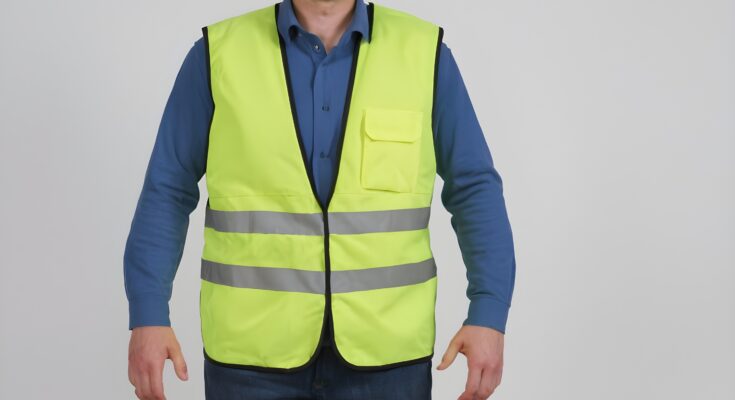The Ultimate Guide to Safety Vests: Staying Visible, Staying Safe
In a world bustling with activity, ensuring your own safety and the safety of those around you is paramount. This is particularly true in environments where visibility is compromised, such as construction sites, busy roadways, or low-light conditions. Enter the unsung hero – the safety vest. These simple yet effective garments play a crucial role in safeguarding individuals by enhancing their visibility and preventing accidents.
This comprehensive guide delves into the world of safety vests, exploring the different types available, the key features to consider, and the diverse applications across various industries. Whether you’re a seasoned professional or simply seeking to understand this essential piece of safety equipment, this guide will equip you with the knowledge to make informed choices and prioritize your well-being.
Types of Safety Vests:
Not all safety vests are created equal. Understanding the different types and their specific uses is crucial for choosing the one that best suits your needs:
- High-Visibility Vests: These are the most prevalent type, readily identifiable by their fluorescent colors like orange, yellow, and green. Designed to stand out in daylight conditions, they are often complemented by reflective strips to enhance visibility in low-light environments.
- Reflective Vests: These vests prioritize reflectivity over color, relying primarily on reflective materials that shine brightly when illuminated by a light source. This makes them ideal for nighttime use, ensuring you are easily seen by drivers or other individuals operating machinery.
- Safety Harness Vests: Combining the functionalities of both safety vests and harnesses, these vests offer an additional layer of protection against falls from heights. Commonly used in construction, roofing, and similar industries, they feature a harness system that can be connected to a fall arrest system for added safety.
Choosing the Right Features:
While the primary function of a safety vest is to enhance visibility, several key features contribute to its overall effectiveness and user comfort:
- Material: Breathable and comfortable materials like mesh or cotton allow for extended wear without causing discomfort. Opt for water-resistant materials if working in wet environments.
- Reflectivity: The quality and placement of reflective material play a crucial role. Ensure the vest has adequate and strategically positioned reflective strips, typically around the torso and shoulders, to maximize visibility from all angles.
- Fit: A well-fitting vest is essential for ensuring comfort and effectiveness. Choose a size that allows for easy movement without being too loose or restricting. A loose-fitting vest might not provide proper visibility, while a tight one can be uncomfortable and hinder movement.
- Pockets: Depending on your specific needs, consider vests with pockets for storing essential items like tools, identification cards, or safety glasses.
- Standards: To ensure the vest meets safety regulations and offers adequate protection, look for ones that comply with relevant safety standards for your region. These standards may include EN ISO 20471 in Europe or ANSI/ISEA 107 in the United States.
Safety Vests: Applications Across Industries:
The importance of safety vests transcends specific job titles or industries. Understanding where these vests are commonly used highlights their versatility and life-saving potential:
- Construction: Construction sites are often filled with various moving vehicles and heavy machinery. Safety vests, mandatory for workers on these sites, ensure they are easily seen by operators, preventing accidents and promoting safety.
- Road Work: Roadside assistance personnel, traffic enforcement officers, and emergency responders rely on safety vests for enhanced visibility while working near moving vehicles on roadsides or highways. This ensures their safety and minimizes the risk of accidents.
- Transportation: Delivery drivers, tow truck operators, and airport personnel often wear safety vests to ensure they are easily seen, especially during low-light conditions or when working near high-traffic areas.
- Cycling: Cyclists, particularly those riding at night or in low-visibility conditions, benefit significantly from wearing reflective vests. This increases their visibility to motorists, reducing the risk of collisions.
- Events: Event staff, crossing guards, and volunteers working near roads or in large crowds often rely on safety vests to improve their visibility and enhance overall safety for themselves and event attendees.
Making the Right Choice:
Choosing the right safety vest involves considering the specific environment and potential hazards you’ll encounter. Ask yourself these key questions:
- What level of visibility do I need? Depending on lighting conditions and the environment, you may prioritize reflective materials for low-light situations or high-visibility colors for daytime use.
- What additional features are essential? Depending on your activities, consider features like pockets, a safety harness, or water resistance.
- What comfort level is important? Choose a breathable and well-fitting vest to ensure comfort for extended wear, especially in situations requiring prolonged use.
Safety First, Always:
Remember, a safety vest is more than just a piece of clothing; it’s a crucial piece of personal protective equipment (PPE). Wearing a properly fitting, high-visibility vest significantly increases your chances of being seen and staying safe in potentially hazardous situations. This simple act of putting on a safety vest can make a world of difference, potentially preventing accidents and saving lives.
Investing in a quality safety vest and making it a habit to wear it in the appropriate situations demonstrates your commitment to personal safety and the safety of those around you. By understanding the different types, features, and applications of safety vests, you can make informed choices, equip yourself with the necessary protection, and contribute to a safer environment for everyone. Remember, seeing is believing, and staying safe is key. Let your visibility be your shield and ensure you are seen, heard, and protected in any environment where enhanced visibility is crucial.

